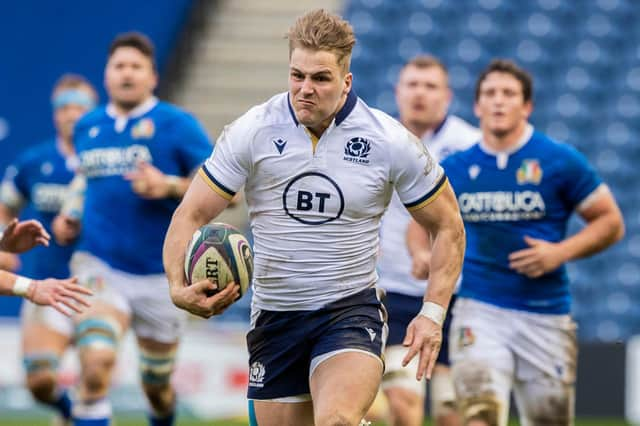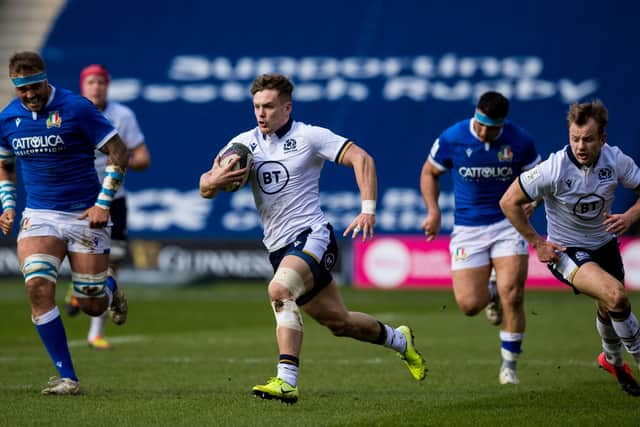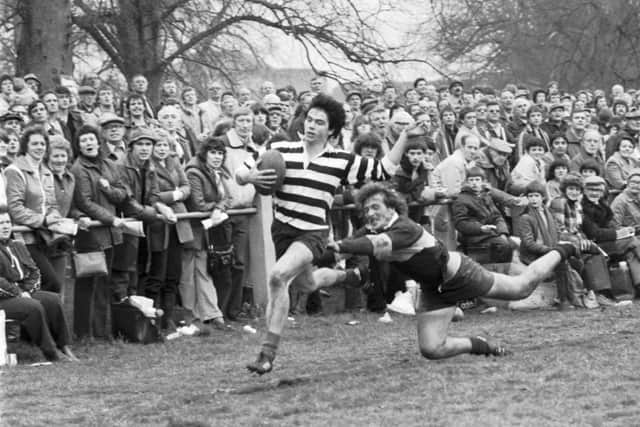Duhan van der Merwe belongs to the Bulldozer breed of winger and is as hard to stop as a buffalo


These days it often seems that more tries are scored by hookers and props than by wings, but valuable as such scores are and very welcome to supporters of the scoring team, they rarely excite the imagination, being scored from very close range, often after a succession of pick-and-drives. So for glamour and excitement, individual brilliance and panache, we still look to the wing.
There is a nice variety about wingers. You have, for instance, the Bulldozer, the Speedster, the Artist, the Magician. They overlap of course, and there are many fine players in the 14 or 11 jersey who are a bit of one, a bit of another. Some of the best can’t be slotted in to one of these categories: Tommy Seymour and Keith Earls, for instance.
Advertisement
Hide AdAdvertisement
Hide AdThe bulldozer is easily spotted, not easily stopped. He is big, powerful and usually fast. The greatest of bulldozers was Jonah Lomu. Pity the full-back who dared to try to tackle him head-on. Now we have Duhan van der Merwe. As hard to stop as a buffalo. Perhaps the new Welsh star Louis Rees-Zammit may be classed as this kind of wing, though the try he scored against Scotland in February suggested he has delicate skills as well as power.


Sheer pace is what distinguishes the Speedster. He may also be a very good all-round player, possessed of other abilities, like England’s Rory Underwood and Scotland’s Roger Baird. But pace is the thing, always exciting. Ken Jones of Newport and Wales, ran the 100 metres for Britain in the 1948 Olympics. The speedster scores tries and is valuable even if he lacks some desirable skills. This might be said of England’s Jonny May. Has there ever been a better speedster than JJ Williams, Lions and Welsh star in a golden decade?
The artist is fast, often faster than he looks. He is elegant, seems to have more time than other players, usually possesses a deceptive change of pace and a swerve which leaves a tackler clutching the air. He rarely wastes the ball, is a master of the chip ahead. Arthur Smith, who captained both Scotland and the Lions was the model artist-wing, Today Teddy Thomas of Racing 92 and France, is a pretty good example of the breed. The artist is the aristocrat of wing-play.
Then we have the magician, often lightweight, always light-footed, the player who can find space where there seems to be none. Naturally he is usually fast, though one of the most prolific scorers of tries from impossible positions, the 1959 Lion, Peter Jackson from Coventry, may have been the slowest man on a straight 20 yards of that Lions back division. The Welsh have always loved wings with dancing feet: Gerald Davies, Ieuan Evans and Shane Williams being prime examples. France’s Christophe Dominici was another delightful dazzler. Today there is no one more magical than Cheslin Kolbe of Toulouse and South Africa. In Scotland we may talk happily of Iwan Tukalo who had a side-step that left opponents floundering even when they must have known it was coming, and now we have Darcy Graham, nimble-footed try-snatcher, and great fun to watch.


Of course there are and have always been many fine wings who don’t fit neatly into one of these admittedly somewhat arbitrary categories, Hawick’s Tony Stanger, scorer of our 1990 Grand Slam winning try being one example, England’s Anthony Watson today being another. And pondering my categories I couldn’t decide where the great Irish Lion Tony O’Reilly properly belonged: bulldozer or speedster?
Then we have full-backs who were also capped on the wing: Chris Paterson, Andy Irvine and Bruce Hay, for example. It was indeed while wearing the number 11 jersey that Bruce scored a memorable more than half the length of the field try against Ireland in 1981, a try made more memorable still by Jim Renwick’s remark that it was the first try he had seen in slow-motion in real-time.
A message from the Editor:
Thank you for reading this article. We're more reliant on your support than ever as the shift in consumer habits brought about by Coronavirus impacts our advertisers.
If you haven't already, please consider supporting our trusted, fact-checked journalism by taking out a digital subscription
Comments
Want to join the conversation? Please or to comment on this article.
